Deep, soft mud and strong winds make the feeding process a little challenging for American Avocets.
Yesterday you’d have never guessed it was spring here in northern Utah – it was cold and windy all morning on Antelope Island. At least it was sunny for the first couple of hours before an impressive storm front moved through.
1/4000, f/6.3, ISO 500, Canon 7D, Canon EF500mm f/4L IS II USM, 1.4 tc, not baited, set up or called in
A large group of avocets was resting on a small and secluded cove but this lone bird was actively feeding. Swirling eddies of wind created small waves traveling in opposing directions and as those waves met it produced this interesting checkerboard pattern on the water’s surface.
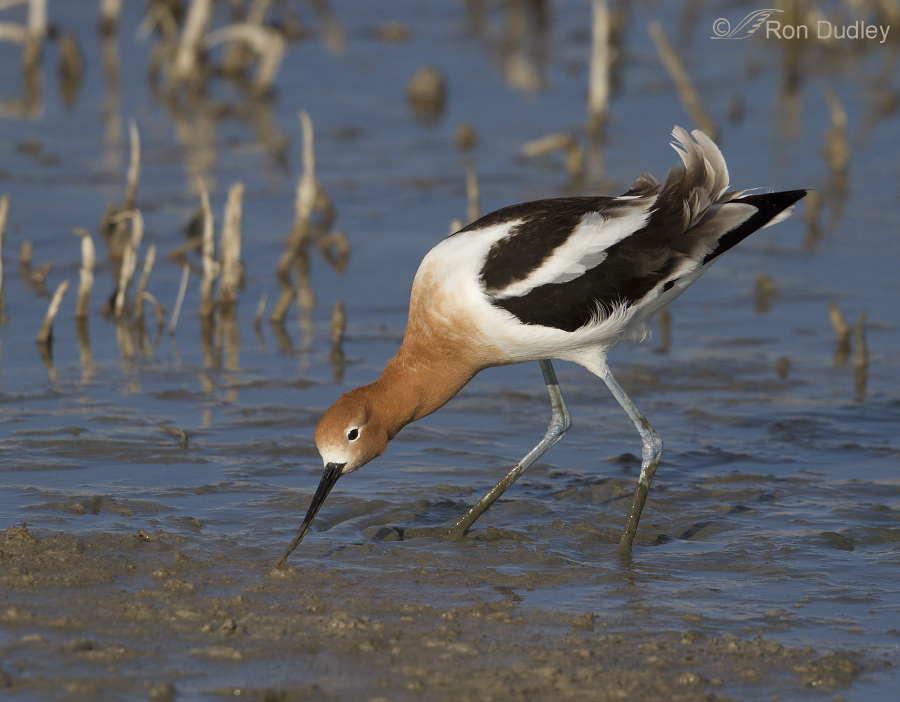
1/4000, f/6.3, ISO 500, Canon 7D, Canon EF500mm f/4L IS II USM, 1.4 tc, not baited, set up or called in
Very soon the avocet decided to change tactics and look for food in the mud near the shore. When the bird had its back turned to the wind some of its feathers would be curled into some interesting shapes.
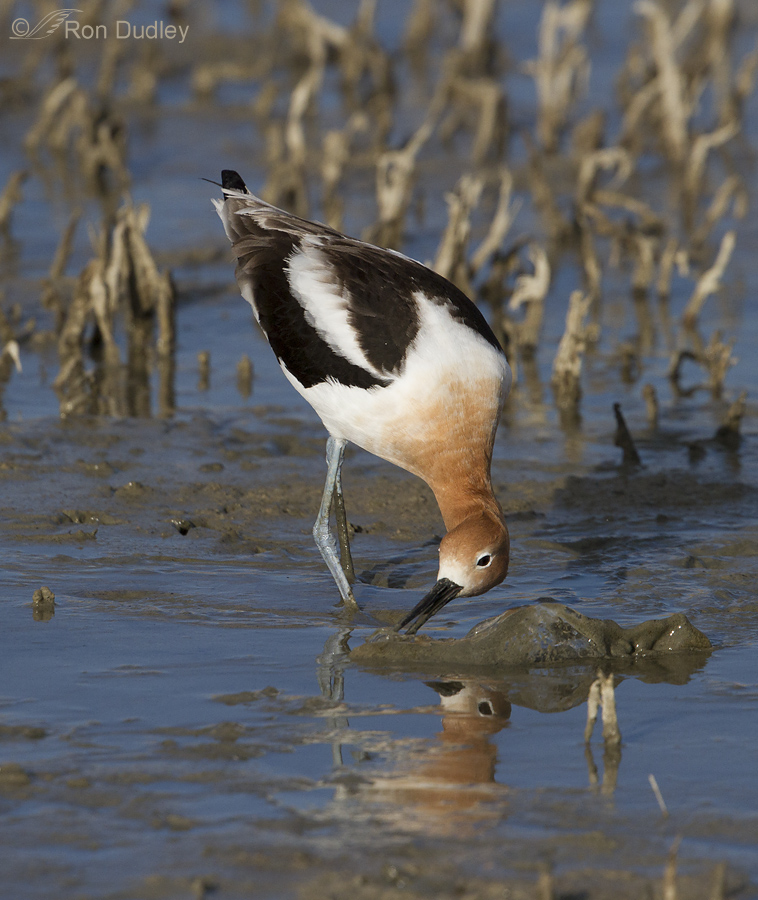
1/3200, f/7.1, ISO 500, Canon 7D, Canon EF500mm f/4L IS II USM, 1.4 tc, not baited, set up or called in
American Avocets have nine named feeding methods, several of which are variations of one called “scything” where their long, recurved bill cuts through the water from side to side. Here the water was thick with mud which made for some interesting visuals as I watched the bird through my lens.
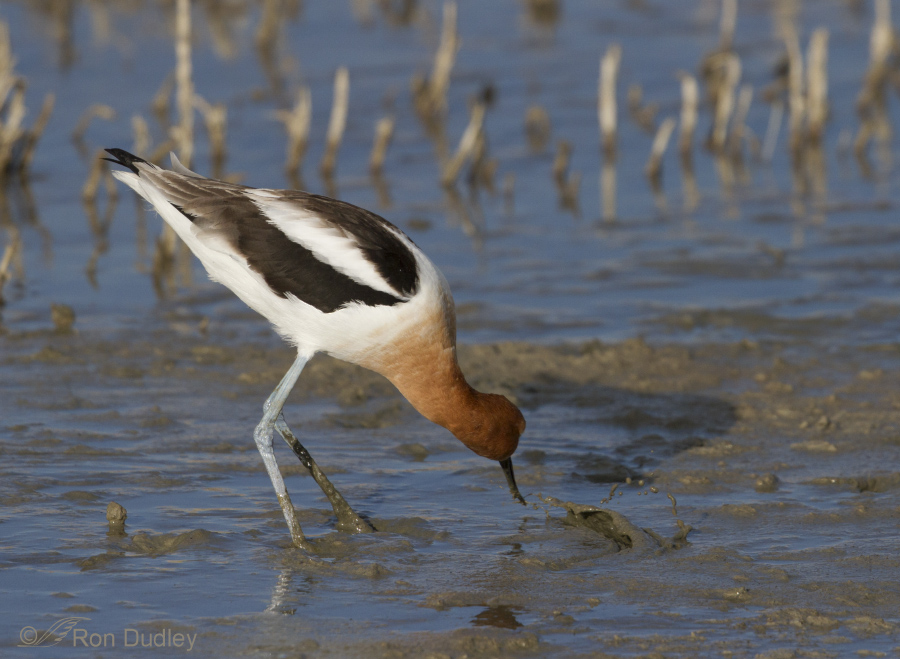
1/3200, f/7.1, ISO 500, Canon 7D, Canon EF500mm f/4L IS II USM, 1.4 tc, not baited, set up or called in
In this shot the bill has just sliced through the mud which was so thick that…
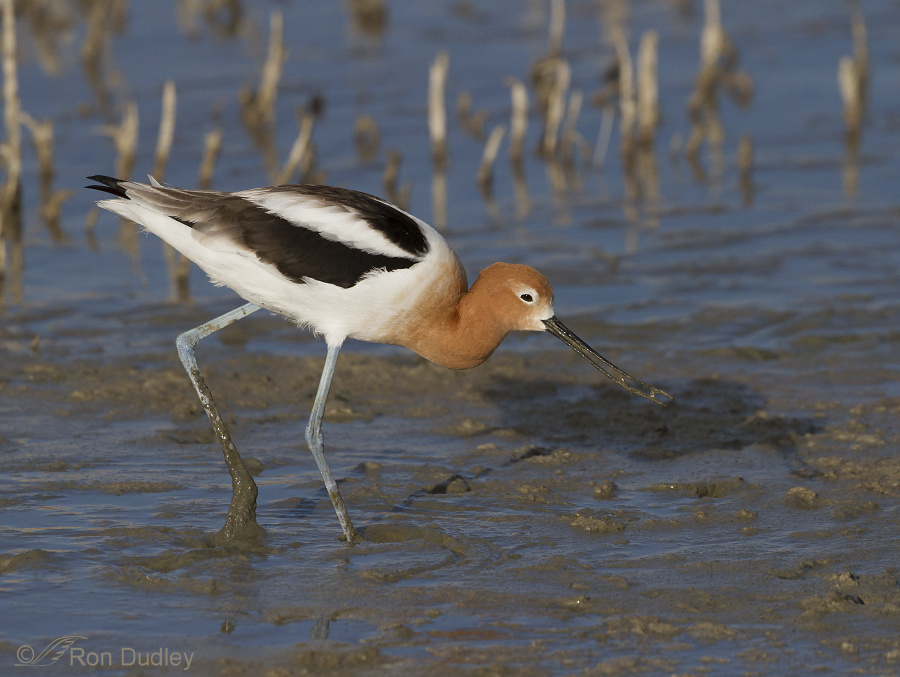
1/3200, f/7.1, ISO 500, Canon 7D, Canon EF500mm f/4L IS II USM, 1.4 tc, not baited, set up or called in
a few seconds later you can still see the swirl pattern in the mud in front of the right foot. The bird is manipulating two food items in its bill.
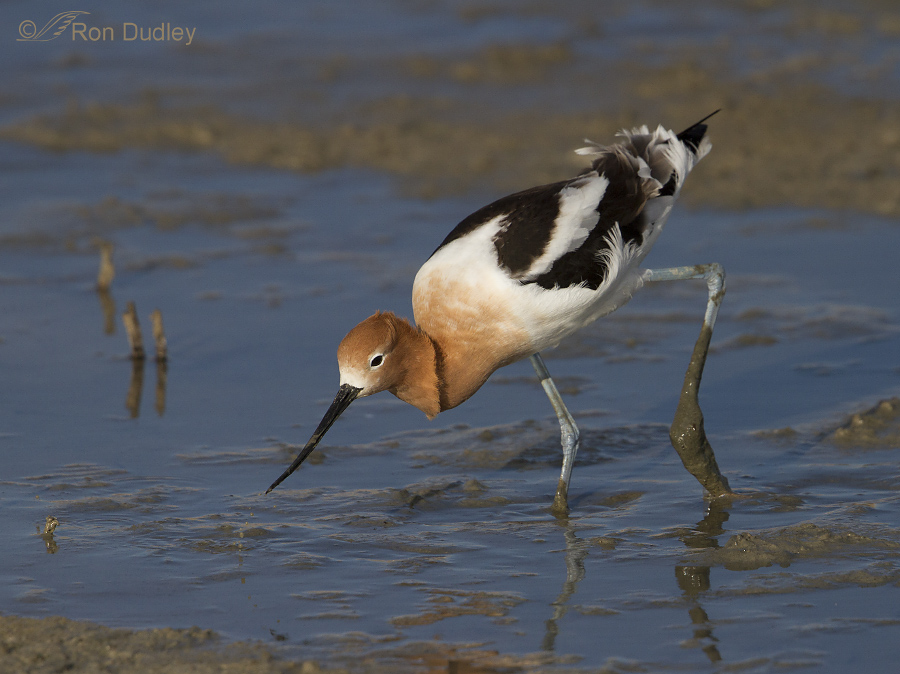
1/4000, f/7.1, ISO 500, Canon 7D, Canon EF500mm f/4L IS II USM, 1.4 tc, not baited, set up or called in
At times the load of mud on the feet was impressive. Here, by comparing the left and right legs, you can see how deeply this bird would sink into the mud.
Some avocet feeding methods are tactile and some are visual. In winter, especially during the shortest days, avocets actually feed at night. Pretty impressive to be able to locate their small invertebrate prey with no visual cues. That specialized bill certainly does its job.
Ron


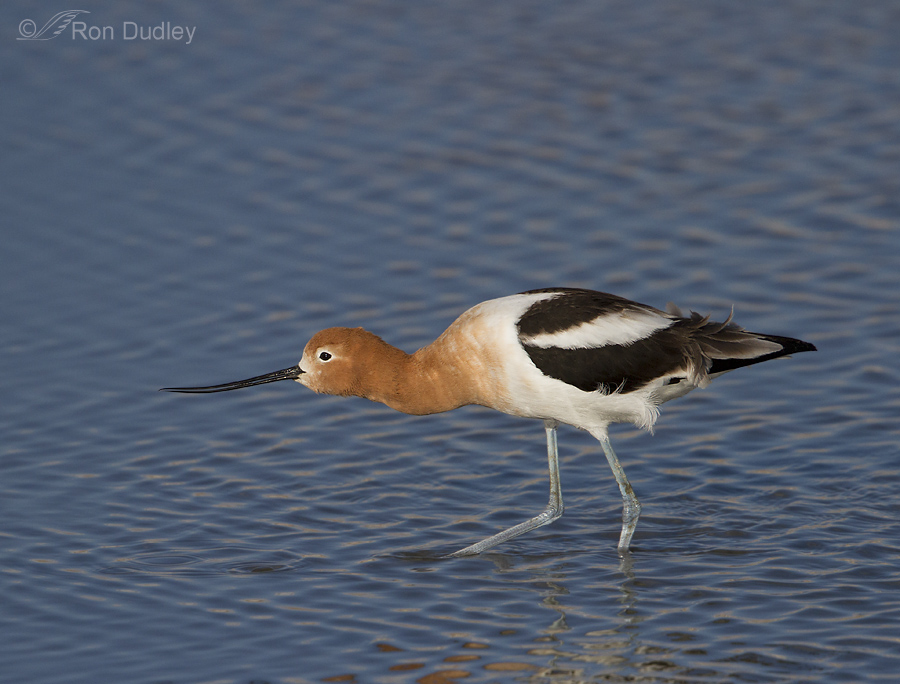
I love Avocets and watching their behaviour.Thank you.
Superb post, Ron! These birds look so delicate, but I dare say if we tried to move that much mud proportionate to our size, we’d be going hungry!
We seldom see the Avocet in breeding plumage down here so your photographs are especially refreshing!
Interesting post, as usual. Don’t think I have seen the scything in the mud … so I must watch these birds more closely.
Terrific images to illustrate the points.
Ron – I’ve never seen an Avocet before – relatively new to birding. I have only recently discovered your blog and I’m certain that I’ll follow for a long time, as has been referenced in previous comments above there is a lot going on in your photos and it is very interesting to read details about a species and learn about what we’re actually looking at. I have a tattoo on my arm of a quote I read by Henry David Thoreau that perfectly describes my observation about most people “It’s not what you look at that matters, it’s what you see”. Thank you for taking the time to learn about your subjects and then for sharing with us.
Cori, Your tattoo quote well illustrates the fact that we often don’t really see what we’re looking at, at least at first glance. I’m guilty of the same but my images give me the opportunity to go back and see what I missed the first time. Usually there’s a lot…
‘Mud, mud, glorious mud, nothing quite like it for cooling the blood…’
Wonderful series – but a lot of work for the Avocet.
Ahh, The Hippopotamus Song, methinks. Yes, it was big time work for the avocet, Elephant’s Child. Thank you.
Hi Ron, looks like there was a bubble in the mud – you can see through it a bit in #3, and in #4 the bird has just popped the bubble – there’s even a bit of spray from the “pop.”
One of the many things I enjoy about your posts is that there’s always so much going on! Thanks, as always.
“One of the many things I enjoy about your posts is that there’s always so much going on”.
Yes, there often is, Betsy. And sometimes I miss some things that my readers point out. Kind’a fun.
Though these are common birds, I still love to see them. Thanks for the in-depth information. You say you’re not really a “birder”, but I think you have the rest of us licked as far as technical analysis goes. That’s the very type of thing I like to know about any species that I encounter in the wild. You must do a fair amount of research before you publish a post.
Thanks very much, Steve. Yes, I do a fair amount of research for some of my posts. That’s part of what I like about blogging – the process is a learning experience.
What wonderful behavioral shots! Thanks for sharing Ron!
Charlotte
I’m glad you enjoy behaviors too, Charlotte.